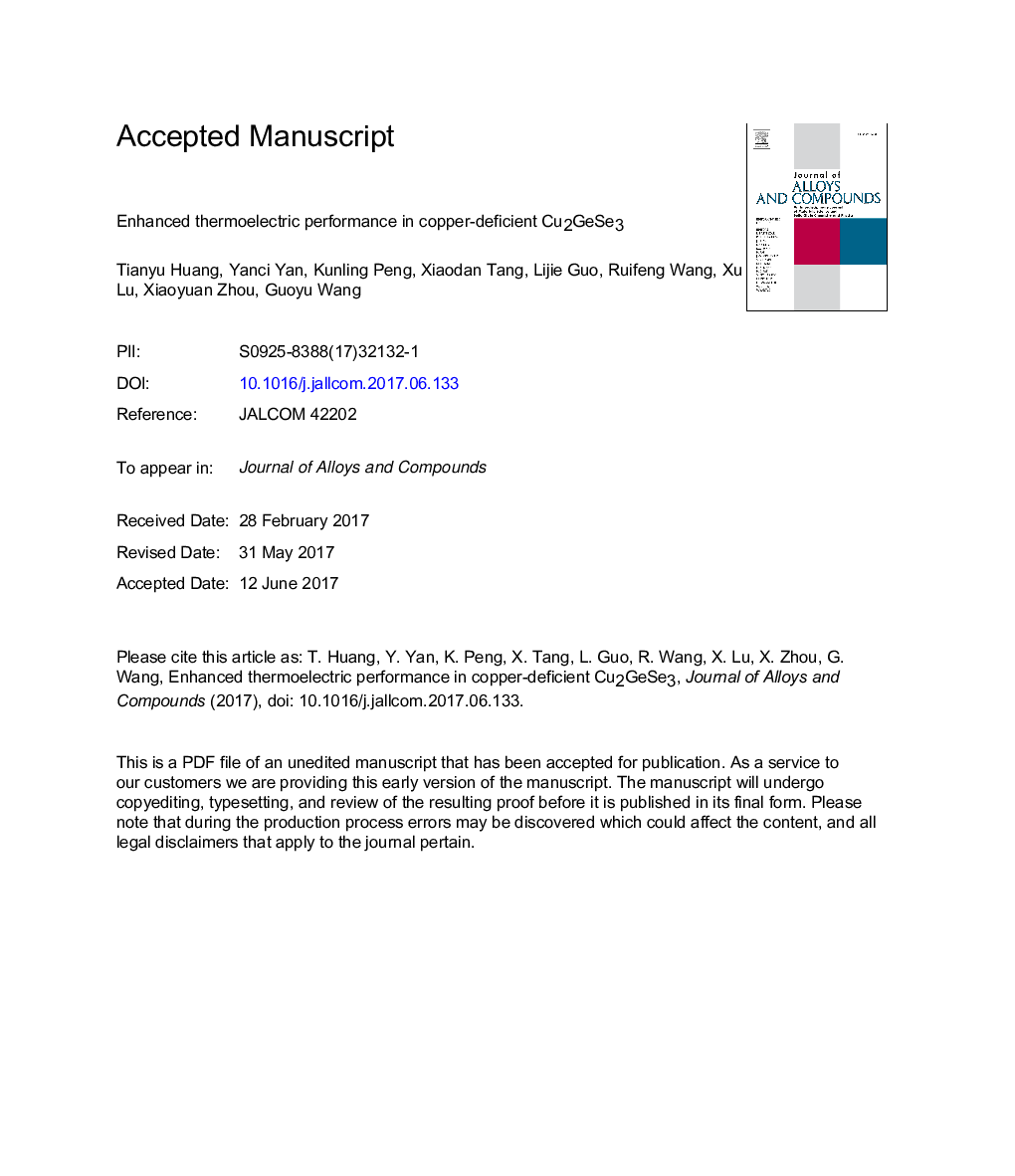| Article ID | Journal | Published Year | Pages | File Type |
|---|---|---|---|---|
| 5458758 | Journal of Alloys and Compounds | 2017 | 16 Pages |
Abstract
Cu2GeSe3 was synthesized via a procedure without annealing step, which leads to suppressed lattice thermal conductivity via formation of more defects. However, an unexpected drop in Seebeck coefficient was also observed compared with samples with similar hole concentration, which may be related to some kind of compensation effect in Seebeck coefficient. To suppress this effect and optimize the thermoelectric performance, a series of copper-deficient samples Cu2-xGeSe3(x = 0, 0.05, 0.1, 0.2) are prepared and studied. Contrary to common knowledge, it is found that the copper deficiency decreases the hole concentration rather than increase it. An upturn in electrical conductivity curve and a bending in Seebeck coefficient curve are found in the copper-deficient samples, which may be related to bipolar effect, or to the thermal ionization of acceptors such as VCu. Finally the power factor is optimized and the peak value of zT = 0.65 is obtained at 758 K for Cu1.95GeSe3.
Related Topics
Physical Sciences and Engineering
Materials Science
Metals and Alloys
Authors
Tianyu Huang, Yanci Yan, Kunling Peng, Xiaodan Tang, Lijie Guo, Ruifeng Wang, Xu Lu, Xiaoyuan Zhou, Guoyu Wang,
